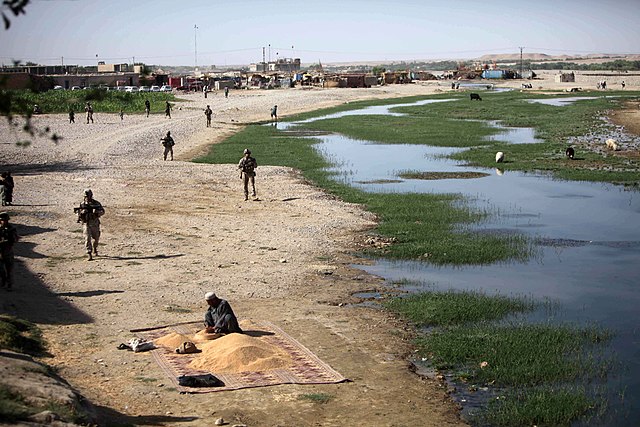Musa Qala is a district in the north of Helmand Province, Afghanistan.
Its population was around 57,500 in 2012 and are 97% ethnic Pashtun. The district centre is the village of Musa Qala; there are 19 other large villages and 200 smaller settlements, mostly along the Musa Qala River. The area is irrigated by the Helmand and Arghandab Valley Authority.
Valley and mountains surrounding Musa Qaleh
Marines with 1st Battalion, 2nd Marine Regiment, patrol the Musa Qala District Center in 2010.
Helmand, also known as Hillmand, in ancient times, as Hermand and Hethumand, is one of the 34 provinces of Afghanistan, in the south of the country. It is the largest province by area, covering 58,584 square kilometres (20,000 sq mi) area. The province contains 18 districts, encompassing over 1,000 villages, and roughly 1,446,230 settled people. Lashkargah serves as the provincial capital. Helmand was part of the Greater Kandahar region until made into a separate province by the Afghan government in the 20th century.
Image: Chaos Company strikes back with Operation Viper Strike 130410 A PV892 016
Image: Kajaki Dam Area MOD 45149824
Image: Mosque in Lashkar Gah
Grishk Dam, built by the United States around the 1960s.






